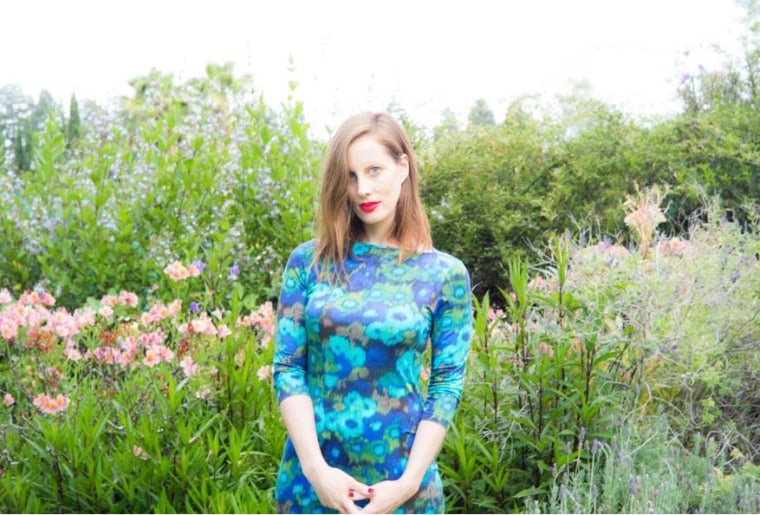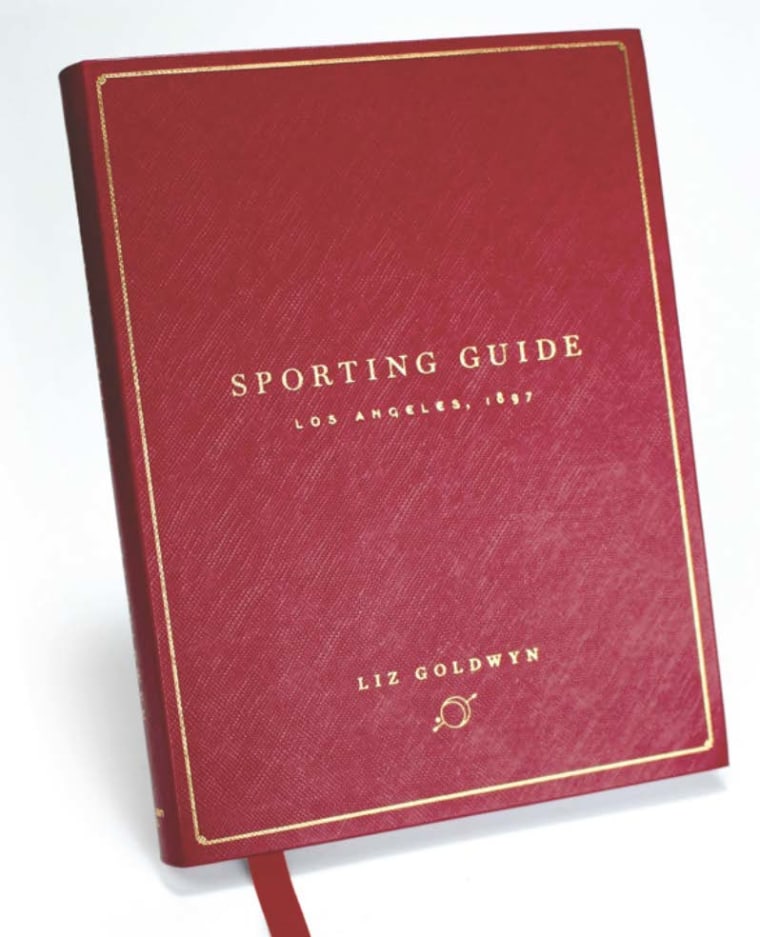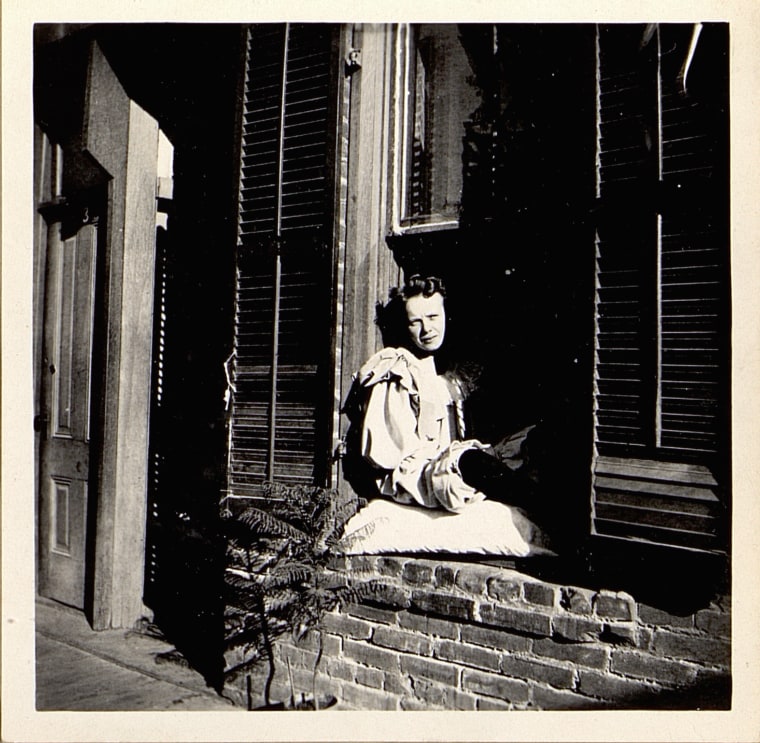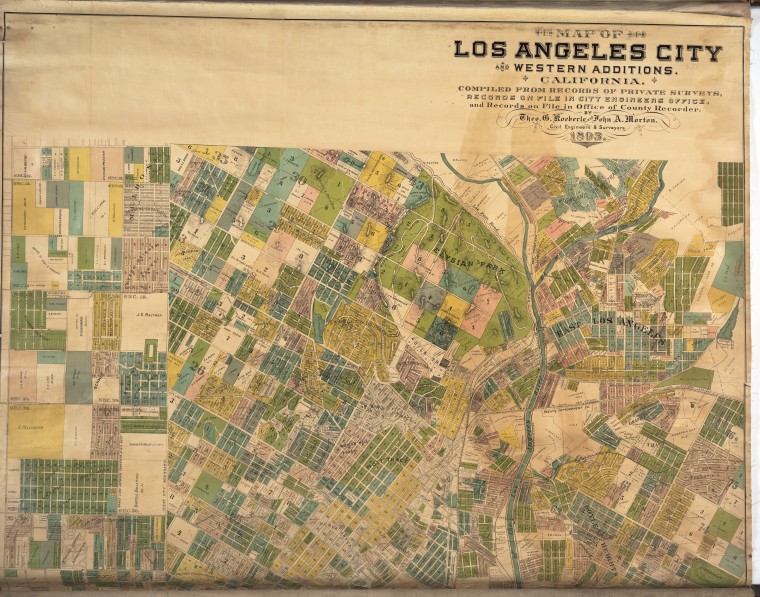Set in Los Angeles in the 19th century, "Sporting Guide: Los Angeles, 1897" is an inventive new book that unfolds in a series of interconnected, fictional vignettes about prostitutes of the era, all bound together in a sort of ZAGAT-style diary. Fun, no? We thought so, too, which is why we got in touch with author and renowned filmmaker Liz Goldwyn to learn more. According to Goldwyn, a "sporting guide" was a popular guidebook of the time that detailed the best brothels in a given city, and her version is intended to be a "candy-coated capsule of history." Read on for the full scoop.

What first appealed to you about this subject?
So, the interest in prostitution started when I was really young, actually. My first job was at Planned Parenthood when I was 13 and I had an active interest in sexuality long before that. My mother was very feminist, and she gave me a ton of books that sort of enlightened me when I was old enough to read. My father, meanwhile, was a charming playboy who loved women. So I had both attitudes, you know, via osmosis. I have four brothers, too, and in a way, it was just an open attitude about sex when I was growing up. I watched this mini-series starring Candice Bergen called "Mayflower Madam" and I was completely fascinated. She plays a madam in New York City, a real person who was an aristocratic madam, and I was so intrigued by this idea that women didn't have very many choices for a profession. It was just a reality that sex work was one of the things they could feasibly do. I didn't feel that because a women chose to do that, that they should be forgotten by history books. I felt instead like they deserved our attention and love.

You're a filmmaker as well as an author. Why did you decide to write these stories down?
Funny you should ask that, because I'm actually planning to adapt it for television. My first book, "Pretty Things," was about the last generation of burlesque. When I approach long-term research projects — both of these books were eight years in the making — I never really think of it as being in one medium. Or at least, the end result won't be in any one medium; it'll encompass several forms of media. In fact, there's often many years of frustration and anxiety within the process, because I'm constantly visualizing it as a three-sixty. So it really takes a while to figure out the structure of things. With "Sporting Guide," I'd actually been working on an operatic or rock opera version.
Wow.
Yeah. I'd been talking about it with a rock star in London for a number of years. I could see the characters vividly that way, and I actually wrote it longhand in composition notebooks, with complete listings including imagery of costumes, and hair and makeup and the interiors of the brothels, lighting, etc. So much research.

Speaking of costumes, your imagery is extremely vivid. Tell us more about the intricate clothes and garments these women were wearing.
Sure. I actually got into the world of burlesque queens through their costumes. It's always an easy reference, you know, because clothing is much more than just, say, a dress; it tells a whole story about how someone loved and lived. Even down to the type of perfume still lingering on the silks. And for me, actually, I was more interested in the 19th-century men's wardrobe than the bloomers of the Victorian women. I don't think I would want to wear those women's clothes. Those layers are very constricting. Women were starting to bicycle around that time, and their skirts would be dragging in the mud. Even the swimming costumes were basically long dresses. You'd just drown. "Fallen women" and prostitutes were distinguished by the fact that they lifted their skirts and showed their ankles and flashed a bit of stocking.
Also, there's a double-page spread from a Sears catalog from 1897 that shows all the corsets available, and it's a bit like ... well, it would be something like Victoria's Secret's main website page with all the featured bras lined up. It shows you what the most popular items are. And it includes a nursing corset. Can you imagine? You'd have just one flap come down, and the rest of you would be completely bound and constricted.

And what about cosmetics?
There's so much to say about this, too! The 19th-century cosmetics these women were wearing were highly poisonous. They contained everything from arsenic to belladonna, and other very poisonous herbs and potions. But, of course, women weren't supposed to wear cosmetics unless they were someone of ill repute. Really, the only ones who wore makeup were actresses and prostitutes until the 1920s when more women were cutting their hair and smoking and all that. What I think is most interesting about the time period are things like enameling studios. Women would lacquer their face with enamel to appear as pale as possible. It wasn't en vogue to be tan, so this was the look. Anyway, yes, we talk a lot about the ingredients in cosmetics now and how many of them are suspect. But just look at these poor women who were ingesting arsenic and putting enamel on their faces!
So, who should read this book?
It could be a gift, or just something beautiful to keep by your bedside. I tried to make it really entertaining. You don't have to read it in order. You could read it as a series of bedtime stories. Neurotic bedtime stories [laughs]. That's what I was going for. If you read it in context, though, you'll notice how the characters link up. When people buy it, it should feel like their own little diary, like an erotic journal.